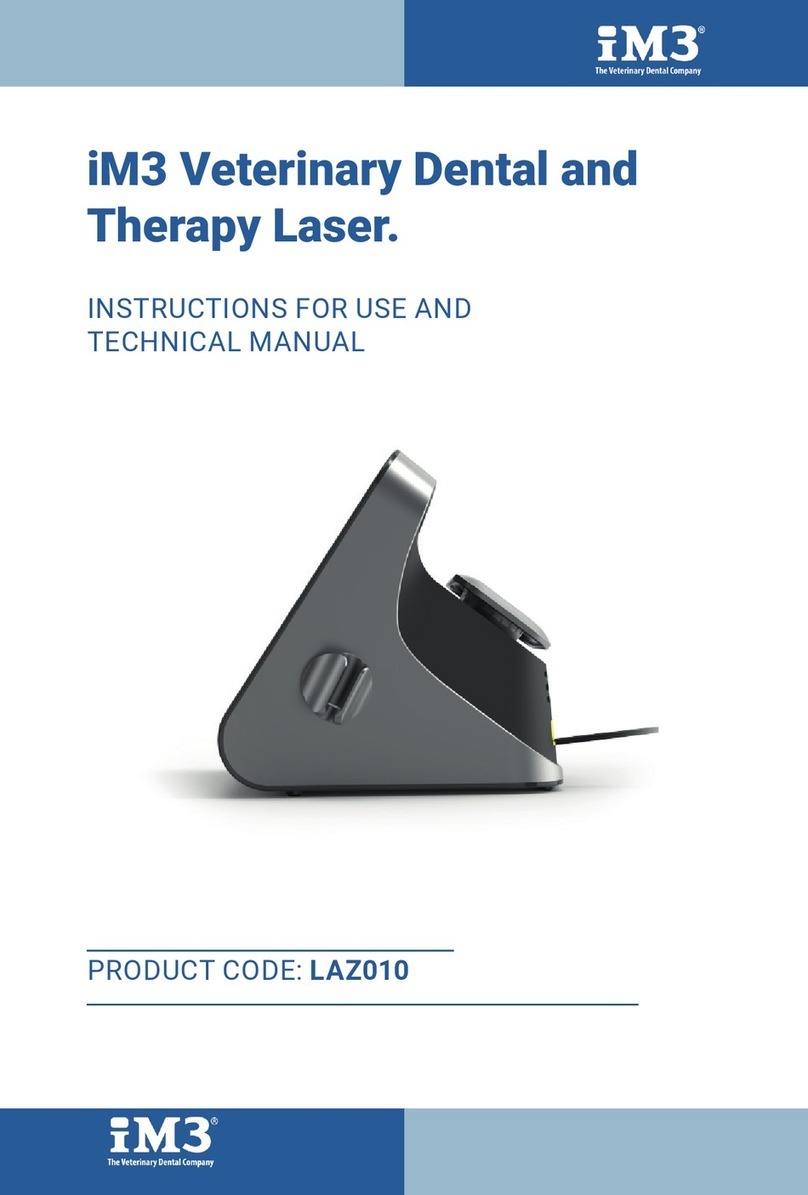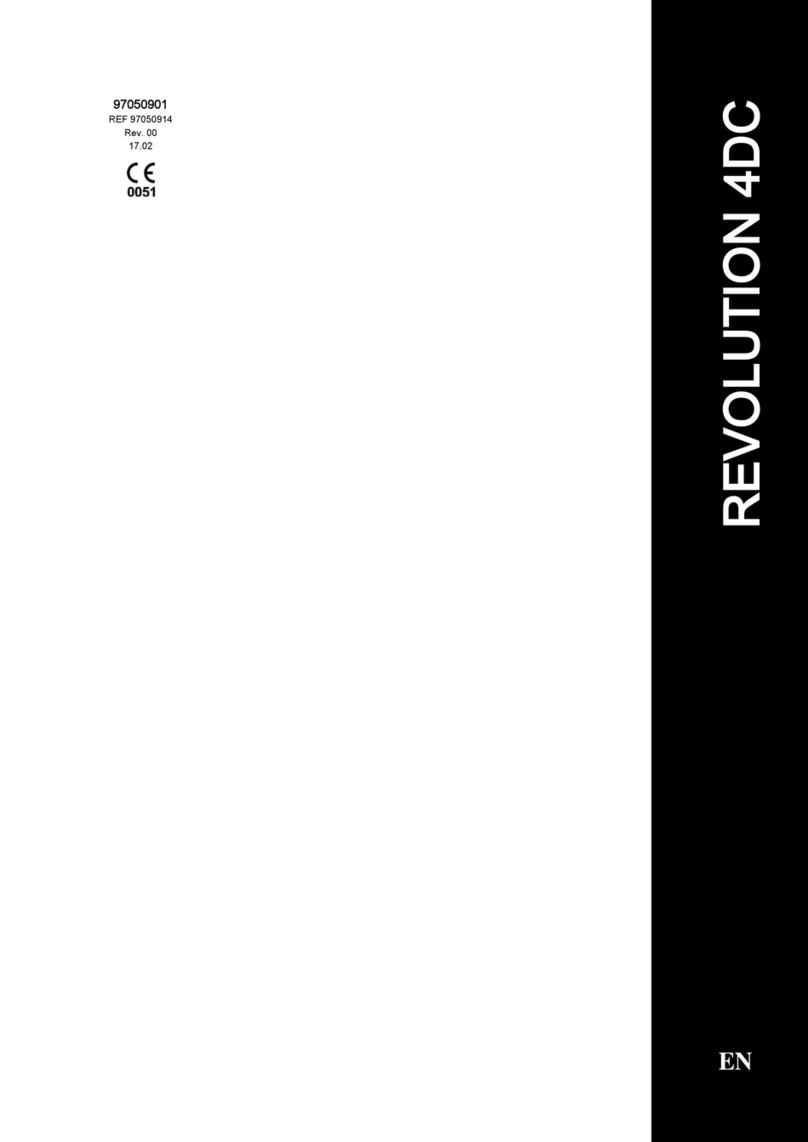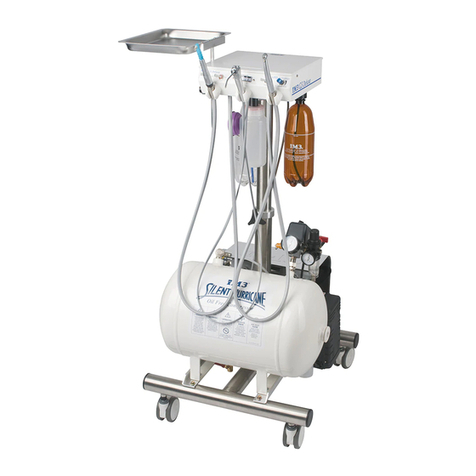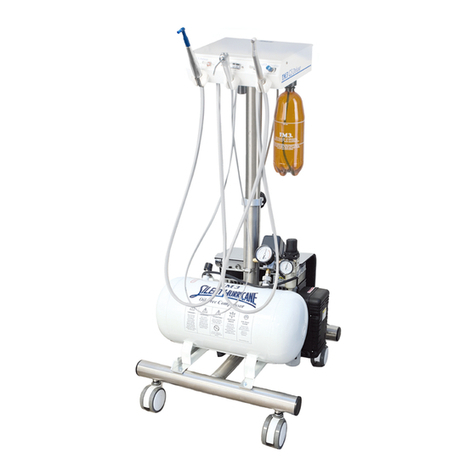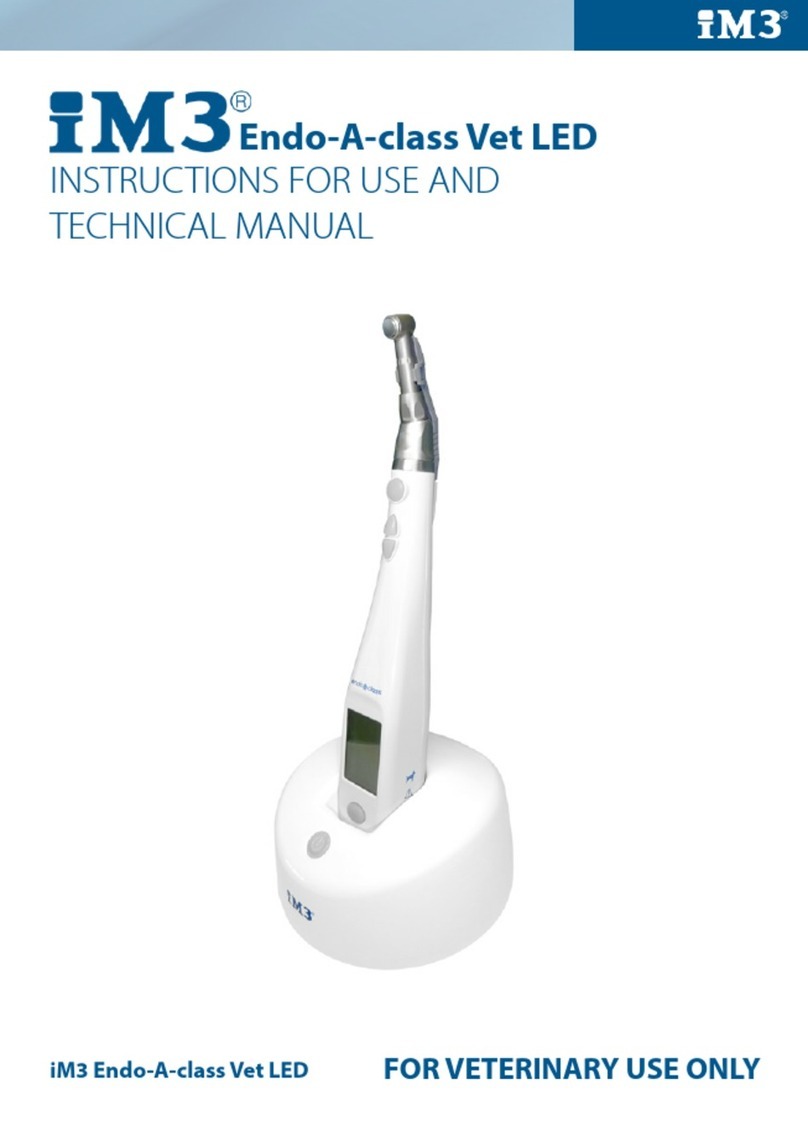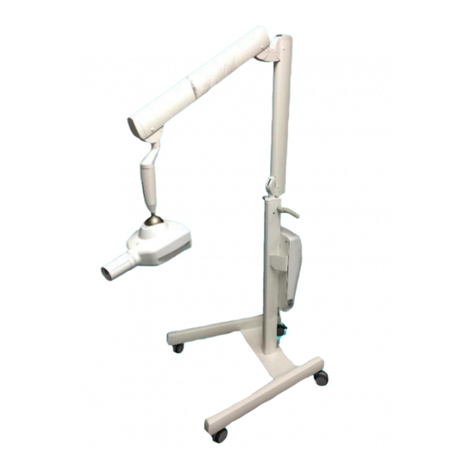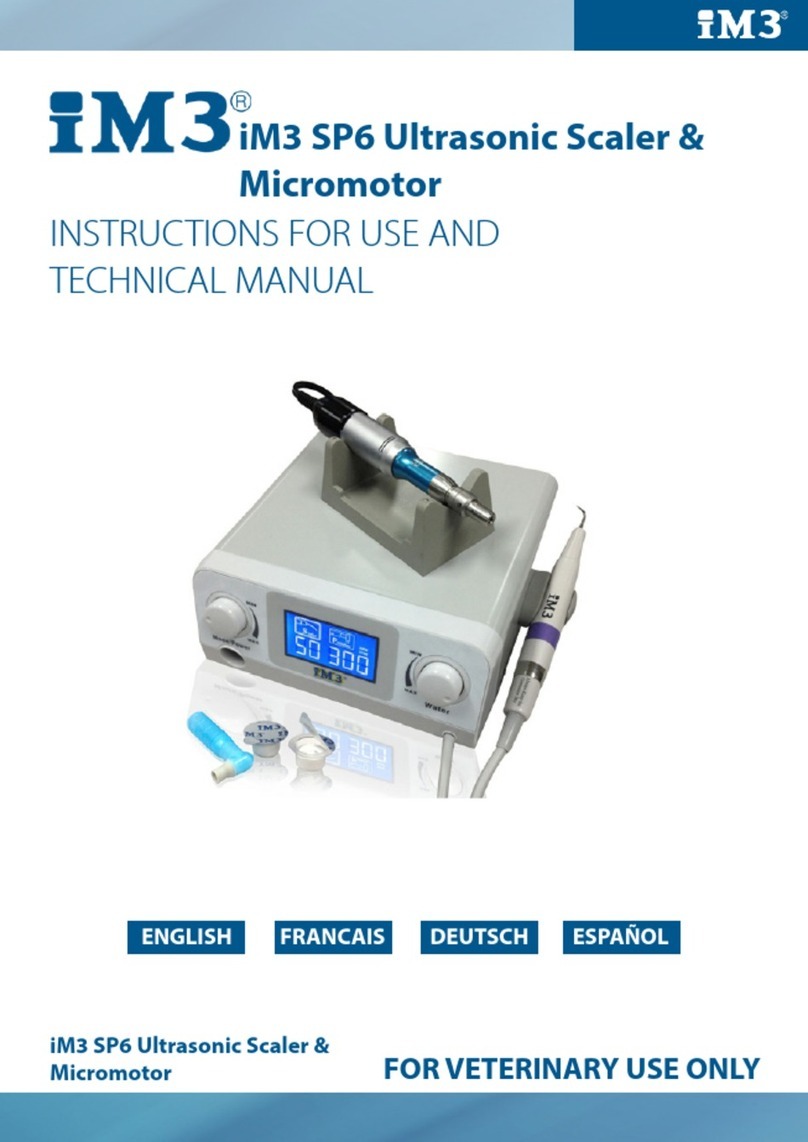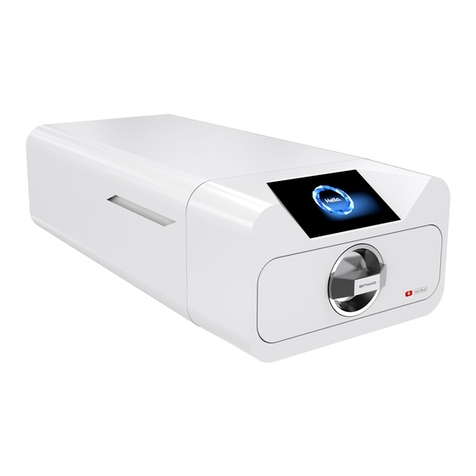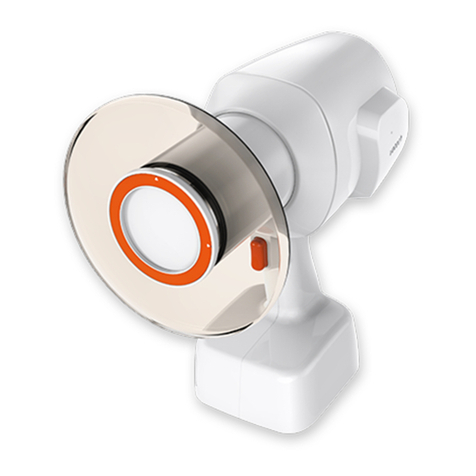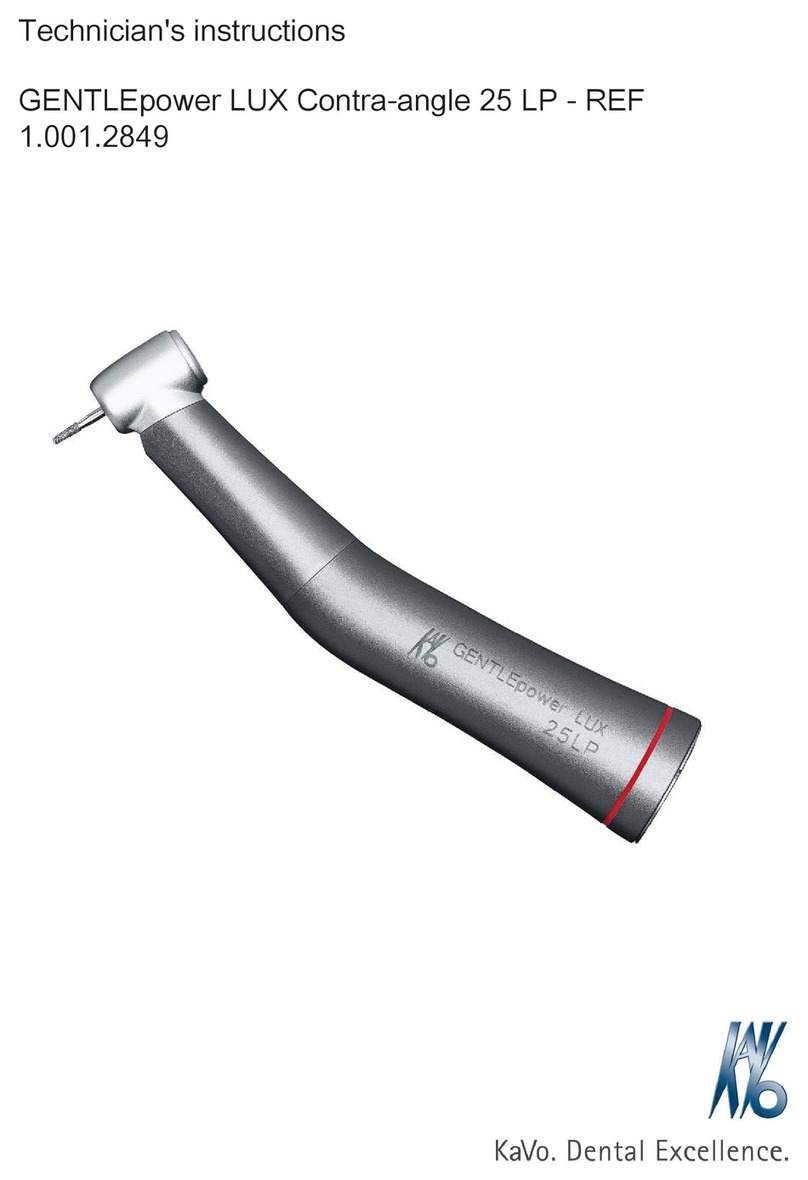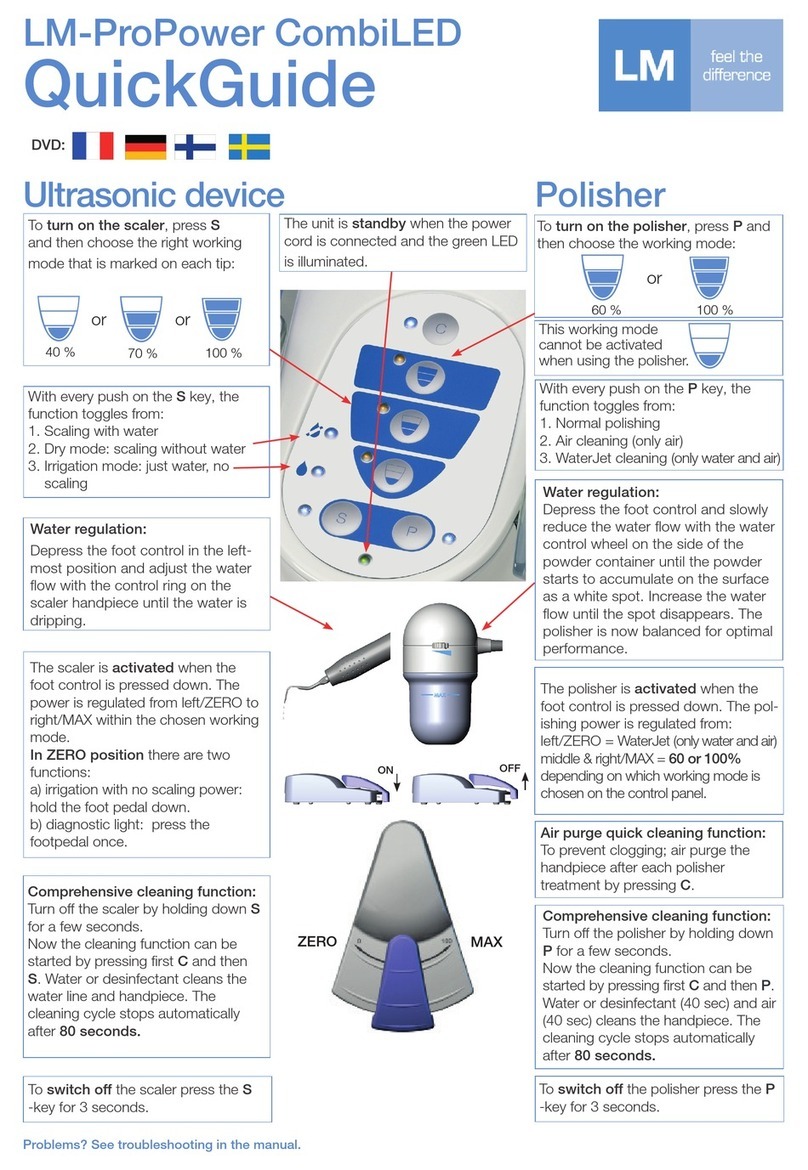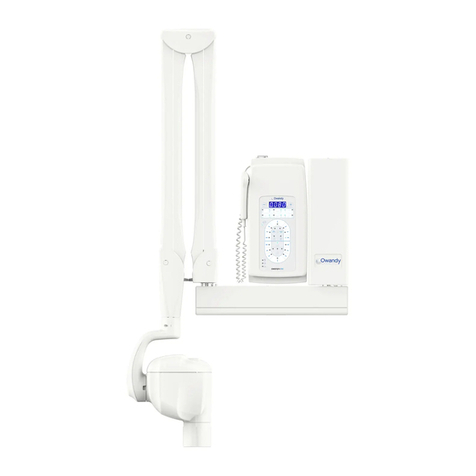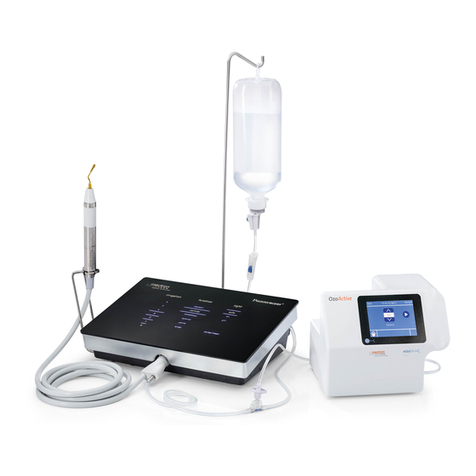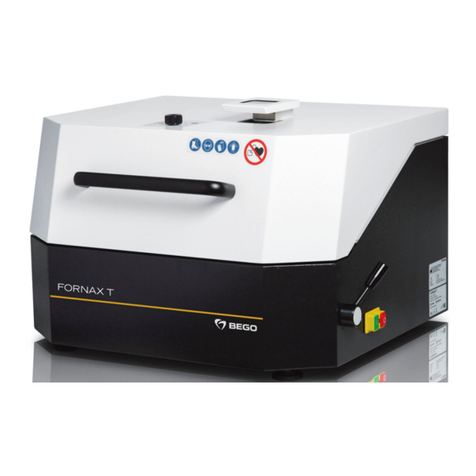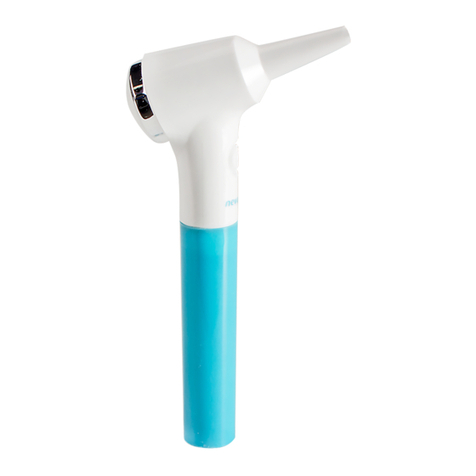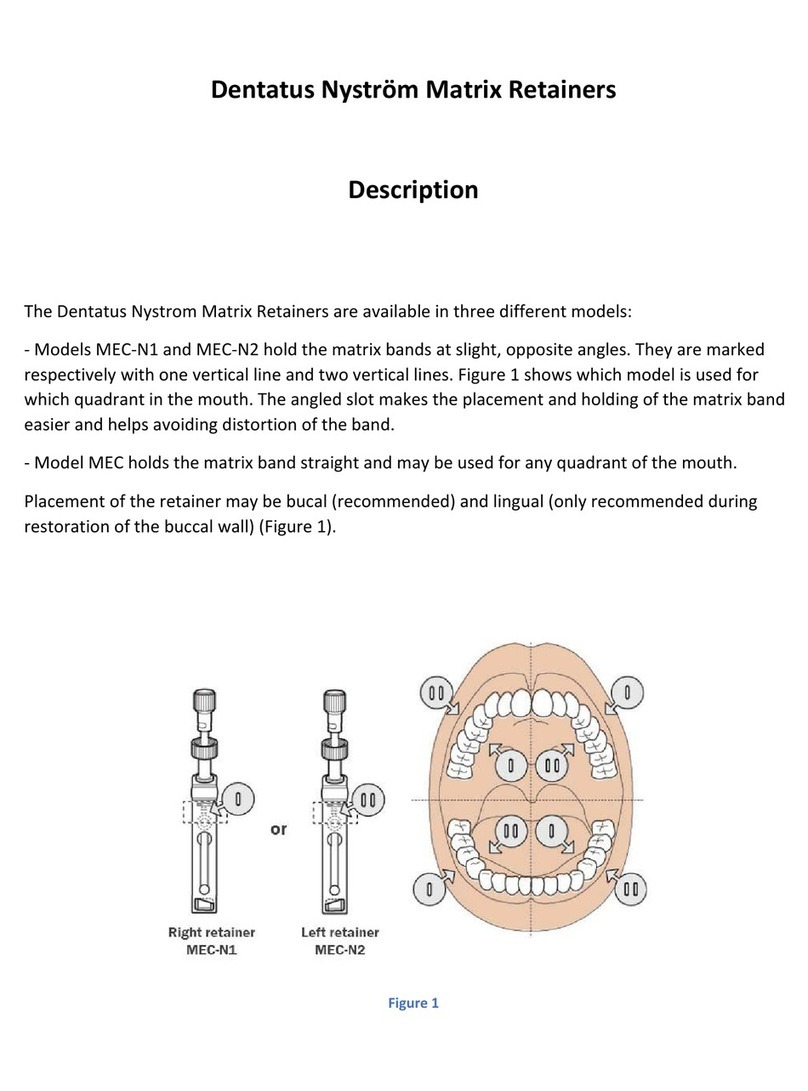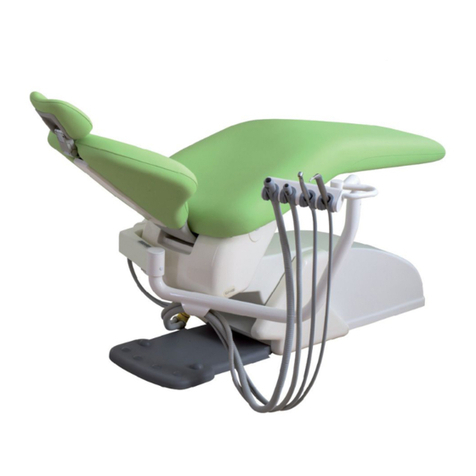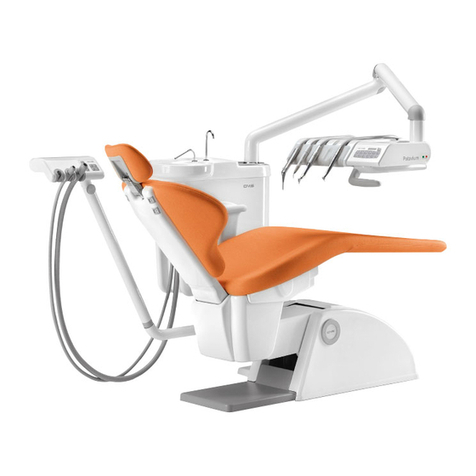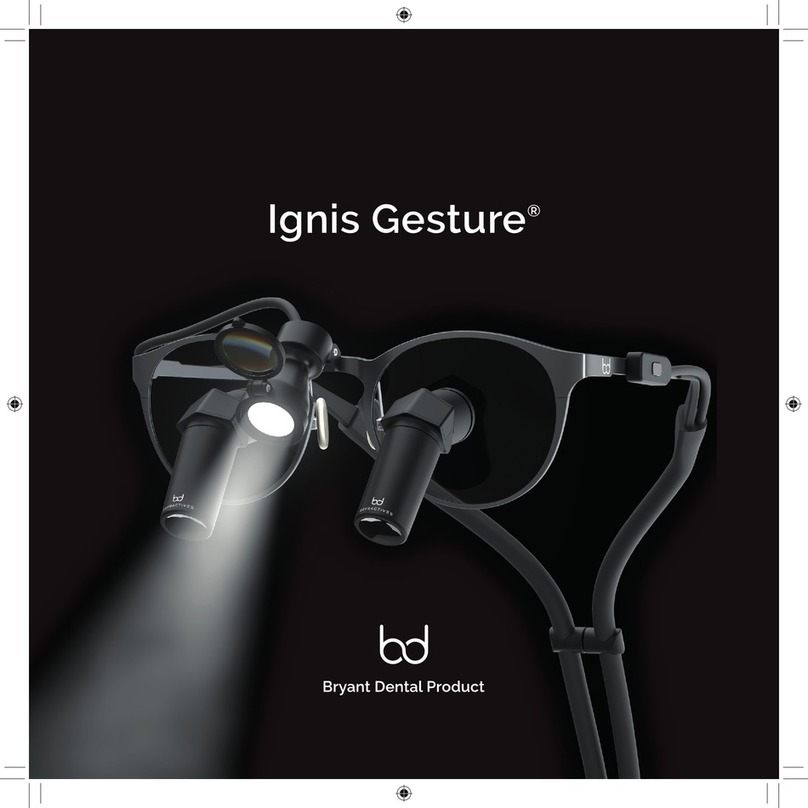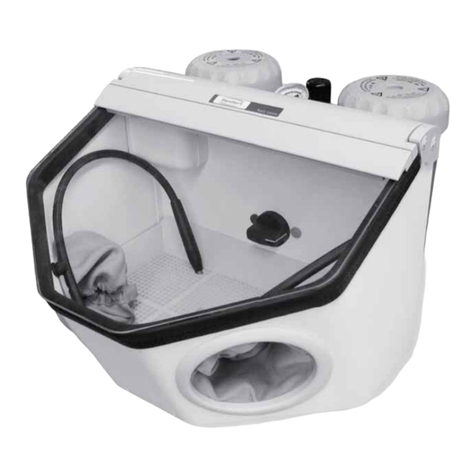iM3 PRO 2000 User manual

Dental Units
Self Service Manual

iM3 Self Service Manual - Dental Units
www.im3vet.com
This manual outlines a step by step procedure to perform both a daily, weekly and annual service on
your iM3 GS Start, GS Deluxe, GS Deluxe LED, Elite or Pro2000 dental unit. Please note that servicing is
essential to maintain the dental unit’s optimal performance and to comply with warranty. If you have any
diculties or questions, you can contact a member of our team on +353 1 6911 277.
Oiling all of your handpieces is vital to keep them working
properly. This should ideally be done every 5 minutes of use
(drilling time, not surgery time). The below graph shows how
oiling at 5 minute intervals can signicantly increase the life span
of your handpiece.
Daily Maintenance
High Speed/Motors
The turbine, located in the head of your high-speed handpiece,
rotates at 400,000rpm. Most cars have a maximum 7,000rpm which
puts this speed into perspective. To maintain these high speeds,
the turbine requires plenty of oil to stay lubricated. This is done by
unscrewing your handpiece from its connector and placing 4 drops
of iM3 oil (MD30) into the second largest hole. Re-connect your
handpiece and run it for 30 seconds while holding the handpiece
downwards so gravity pushes the oil to the turbine.
iM3 aerosol oil (MD40) can also be used by spraying directly into the
second largest hole, using the pointed nozzle, for 2 seconds. This will
eliminate the need to run the handpiece as the aerosol force will spin
the turbine and evenly distribute the oil.
Low Speed/Nose Cone/Contra Angle
To oil your cone attachments and contra angles, use iM3 aerosol with
the tubular nozzle. Seperate the cone/contra angle from the motor
and insert the nozzle. Spray for 2 seconds.
It is possible to oil using the drops method with the provided oiling
tube. Apply and operate for 30 seconds as for high speed handpieces.

iM3 Self Service Manual - Dental Units
www.im3vet.com
An alternative to oiling all of your handpieces is the iM3 HCR-100. This
is an oiling unit that blows air to help dislodge any debris while also
lubricating the handpieces. It is supplied with a 500ml bottle of oil,
an E-type tting for nose cones and contra angles and two 4-hole or
6-hole ttings for motors and high speed handpieces
There are 3 programs, each can be operated individually, oering 1,
1.5 and 2 minute cycles depending on the level of oiling required
(longer surgery times will require more oiling). It can be run from your
dental unit compressor or via centralised compressed air and has a
small foot print of 22cm x 27cm.
Apart from oiling your handpieces, daily maintenance is minimal.
Cleaning the unit using a gentle disinfectant is important to prevent
staining and bacterial build up. It is also important to switch o both
the power and pressure when the unit is not in use. To turn o the
unit’s pressure, simply ick the switch on the front of the unit from
‘coolant’ to ‘o’ (this is located on the back in Elite and Pro2000 units).
Pressure sitting in the unit for prolonged periods of time can exert
stress on the lines and coolant bottles, weakening them over time.
Weekly Maintenance
The compressor should be drained on a weekly basis as residual
water vapour slowly builds up in the compressor during use. When
not drained, the water vapour within the compressor increases over
time, creating less space for compressed air and in turn making the
compressor work harder with the little available space left. This leads
to more noise pollution as the compressor tries to maintain pressure
levels and potential overheating.
To drain your compressor, turn o the unit and turn the knob, labelled
‘Drain’, located on the top left of the tank anti-clockwise*. You will
experience some mist and droplets of water, this is normal. We usually
recommend to open on a Friday evening and leave open over the
weekend before closing and switching back on Monday morning but
this will depend on your practice schedule and opening hours.
* in older units, this release valve is located on the left-hand side,
underneath the compressor. It is a red handle which is twisted, like
you would to shut o a valve in a pipe.

iM3 Self Service Manual - Dental Units
www.im3vet.com
Yearly Maintenance
Filters/Straw
You must replace the water lters (white block located on the blue
and green lines) in each of the coolant bottles yearly. They come
supplied with tubing and are replaced by turning o the coolant
pressure and unscrewing bottles. The old line and lter is pulled
straight down and the new line and lter is pushed on in its place.
The blue line goes into the distilled water bottle (clear) while the
green line goes into the CLS bottle (brown). We advise you use
distilled water over a direct water supply. Please speak with your iM3
representative for more information and measures that need to be
taken when working with a direct water supply.
The iM3 straw is a disinfectant that replaces water lines. It releases
silver nitrate residually over the course of 365 days to control bacteria
and pH so should therefore be replaced yearly if using. It is inserted
the same way as for lters but requires a once o ‘shock’ treatment
during initial installation/replacement. Attach the straw and switch
on the machine. Run water through all of the water lines (handpieces
with water, scaler and three way syringe) into a bucket until the water
collected is a very pale blue. Let the system sit for 24 hours and then
run all the lines again until the water collected is now clear. Water can
now be replaced as normal throughout the year.
If using CLS, you only require a Straw in your distilled bottle for
ecacy. If using distilled water in both bottles, a Straw will be
required for both bottles.

iM3 Self Service Manual - Dental Units
www.im3vet.com
Air Filter
Located on the left side, behind the compressor, is a silver chrome
casting which houses to the lter the stops dust and air particles
blocking the motor. To open press in and turn clockwise. You will
immediately see a yellow lter which can be pulled out and replaced.
Exhaust Bottle
This is the clear bottle with a purple lter, you will nd two on Elite
and Pro2000 units. To replace the lter, unscrew the bottle from the
unit and then unscrew the purple lter from the bottle. Replace with
a new purple lter and re-attach to the dental unit.
Pressure Dials
The nal step of your annual service to check the values on your
two pressure dials, located on the right side of the unit above the
compressor. These dials read the air pressure inside the compressor,
one reading in BAR and the other in pounds per square inch. The
needle on the left dial should sit somewhere between 90-120psi
while the needle in the right dial should sit at 5 bar. If the pressure on
your dials is displaying a gure outside of this range, please contact
iM3 Support on +353 1 6911 277 for instruction.
Handpiece Speed
While not a part of your service, it is no harm to make sure your
handpieces are operating at the correct speed. Your high speed lines
should be working at 40psi (no lower than 35psi) while low speed
lines should be working at 35psi (no lower than 30psi). These can be
altered by adjusting the silver dials underneath the chassis on the left
and right side

iM3 Self Service Manual - Dental Units
www.im3vet.com
Product Code Description
MD30 Handpiece Oil - 30ml bottle
MD400 Handpiece Oil - 400ml Aerosol
MD4010 Aersol Nozzle for High Speed
MD4020 Aersol Nozzle for Low Speed
HCR-100 HCR-100 Oiling Unit
ST312 500ml Oil for HCR-100
G1500 Distilled Water Bottle - Clear
D1440 CLS Bottle - Amber
PS001 iM3 Straw
P7957 Purple Filter
I64840 Yellow Filter
W0530B Blue Line with Filter
W0530G Green Line with Filter
Table of contents
Other iM3 Dental Equipment manuals
